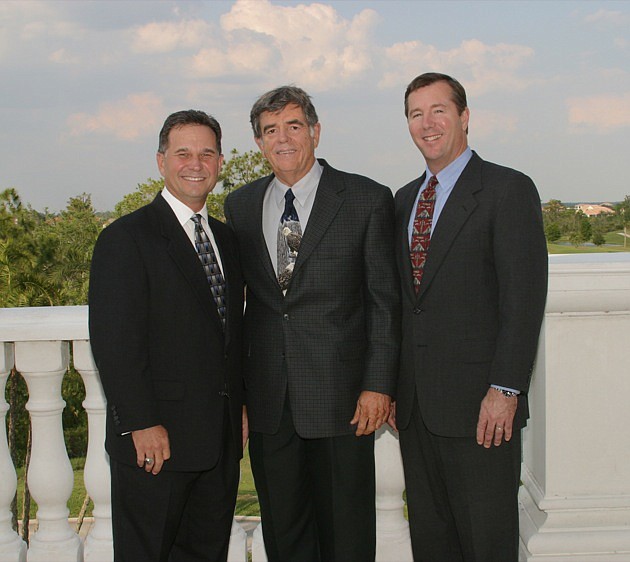- November 26, 2024
-
-
Loading

Loading

Lem Sharp and a few other executives at Sarasota-based construction firm W.G. Mills decided in 2008 there was only one way to deal with the recession.
Attack it.
Sharp, president of W.G. Mills, says the consensus opinion within the firm was to grow any way possible, even if that meant some risky steps. The strategy included opening new offices in two states where it had no prior work and hiring a trio of new business development people for its Florida offices — counterintuitive moves few of its competitors made.
“We've been here 38 years and we want to be here another 40 years,” says Sharp. “You can't do that by sitting on your hands.”
The moves, in at least one major way, have paid off. The firm, founded by Walter Mills in 1972, was one of only a handful of Gulf Coast construction firms to grow in 2009. In fact, the company is now the largest construction firm headquartered on the Gulf Coast in terms of annual revenues, with $274.63 million in 2009.
That $274.63 million figure is up 17.4% from 2008, when the company had $234 million in revenues. Even more growth: The company is up 62% since 2006, when it had $169.94 million in annual revenues.
Clearly, the aggressive posture the firm decided to take 18 months ago was a big boost, says Sharp. But the company also has an advantage in that its niche — education construction — is one of the few fields that still provides recession-era work opportunities.
“We've been very fortunate to be in the education sector,” says Sharp. W.G. Mills has built about $1.2 billion worth of school buildings since the 1970s, Sharp says, with most of that in Florida.
Mills, a University of Florida graduate, even founded the firm with an emphasis on education construction. One of the company's first projects was an addition for a Sarasota County Vo-Tech school in 1972.
Sharp, a fellow Gator, joined the company in 1973. The company grew in stature, jobs and local esteem over the ensuing decades. Its list of past projects includes: North Port High School in southern Sarasota County, a $43 million job; the four-building complex and headquarters for FCCI Insurance Group in Lakewood Ranch, built on 40 acres; and Palmetto Ridge High School in Naples, a $31.8 million project.
The company moved outside of the Gulf Coast several years ago and now has offices in Fort Myers, Clearwater, Jacksonville, Palm Beach and Orlando, in addition to its Sarasota headquarters. The Florida strategy, says Sharp, has always been to open a real live office with employees and activity — not just a desk and a phone to win local preference favor with county and city officials.
“We've tried to be the local firm statewide,” says Sharp. “We go into a community and stay there.”
The move to open offices outside the Sunshine State has been trickier and riskier. W.G. Mills' first foray out of Florida was in Cary, N.C., which it opened in the fall of 2008.
The company's two new hires in Cary quickly went about winning work the same way the W.G. Mills people in Sarasota and other Florida regions do: Network like crazy. Starting from zero, of course, makes it that much harder in an industry like construction, where many jobs are won based on relationships.
W.G. Mills recently scored its first few jobs in North Carolina, one in education and another in the military.
The company launched a second non-Florida office, in Savannah, Ga., about nine months after it opened the Cary office. It's still pursuing jobs in that region.
Sharp says the company plans to grow within Florida, too. Its latest statewide focus will be in Gainesville, where the company is currently going after some education and local city projects.
The company also plans to grow by services, not just in locations. Like many of its peers and competitors, for instance, the firm now offers to do more for clients, to keep more work in-house.
One way W.G. Mills is doing that, says Sharp, is through “building information modeling”, a decades-old concept making a comeback to prominence in the industry. In “building information modeling”, a firm can use real-time modeling software to make construction more efficient and a building last longer.
The new services, hires and offices go to the larger point Sharp made with his fellow executives in 2008: Competition will only make staying at the top of the industry that much harder.
“We will need to work harder to get a smaller market share,” says Sharp. “We're not the only firm with good credentials. We aren't the only guys coming to the dance.”